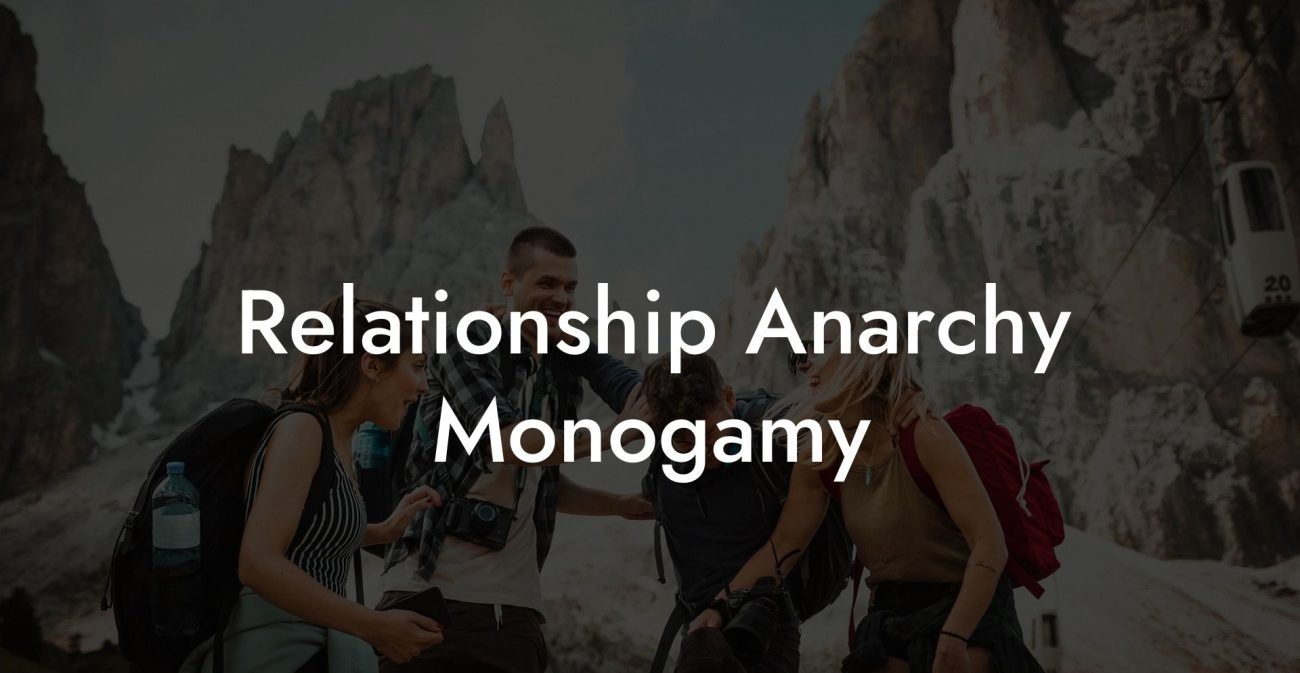Welcome to The Monogamy Experiment – your one-stop guide for exploring the intricacies of relationships, whether they be monogamous, non-monogamous, or somewhere in between. In this post, we delve into the world of polyamory, a relationship model that has been picking up attention in recent years. So, sit back, grab a cup of tea, and let's dive into the captivating realm of polyamory: its meaning, practices, benefits, challenges, and some real-life experiences that offer insight into this fascinating way of love.
Polyamory Table of Contents
The Complexities and Benefits of Polyamory
Polyamory Example: Laura and Michael's Journey
The Polyamory Breakdown
Polyamory, derived from the Greek word 'poly' meaning many, and the Latin word 'amor' for love, is the practice or desire for intimate, often romantic, relationships with more than one partner, with the knowledge and consent of all involved. Polyamory is distinguished from other forms of non-monogamy like swinging or open relationships, because it emphasizes the cultivation of deep and meaningful connections with multiple partners, rather than solely focusing on sexual exploration.
Polyamorous relationships can come in many forms, such as:
- Triads: Three partners involved with each other.
- Quads: Four partners, usually formed by two couples coming together.
- V or hinge: One person acts as the "hinge" in a relationship involving three people, with the other two not romantically involved with each other.
- Polycules: Larger networks of interconnected polyamorous relationships.
- Solo polyamory: An individual who engages in multiple relationships but maintains a strong focus on independence and autonomy.
The Complexities and Benefits of Polyamory
Polyamory offers a wealth of benefits, including expanded opportunities for love, support, and personal growth. With multiple partners, individuals in polyamorous relationships can experience a greater diversity of emotional and romantic experiences, which can lead to more fulfilling and enriching lives. The nature of polyamory also encourages open and honest communication, as navigating multiple relationships requires a high level of understanding and trust between all those involved.
In addition, polyamory challenges the traditional notion that love is a scarce resource that can only be given to one person at a time. By embracing the idea that love is abundant, polyamorous individuals can free themselves from the confines of societal expectations and create unique relationships that best suit their needs and desires.
Polyamory Example: Laura and Michael's Journey
Laura and Michael have been together for nearly ten years. After many discussions and self-reflection, they realized that they were both curious about exploring romantic connections with other people while still remaining committed to each other. They began to read about polyamory and join online communities where they could discuss their feelings and ask questions.
After a few months, they met Sarah, who was also interested in polyamory. Laura, Michael, and Sarah entered into a triad relationship, with each of them romantically involved with each other. They encountered challenges, such as navigating jealousy and managing their time, but through honest communication and trial-and-error, they have built a strong foundation for their polyamorous journey.
The Challenges and Potential Pitfalls
Though polyamory provides many advantages, it also comes with its share of challenges. Managing multiple relationships requires time management skills, as well as a high degree of emotional intelligence. Jealousy, insecurity, and possessiveness can be significant hurdles to overcome for those new to polyamory. There is also the potential for discrimination or judgment from those who may not understand or accept polyamorous lifestyles.
Embracing the Polyamorous Journey
Polyamory – a complex and fascinating way of love that challenges societal norms but offers an abundance of possibilities. As with any type of relationship, polyamory requires patience, understanding, and commitment. If it piques your interest, take the time to educate yourself and communicate openly with your current or potential partners.
Thank you for exploring polyamory with us here at The Monogamy Experiment, and be sure to share this post with friends or loved ones who might also find this topic intriguing. Keep an eye out for more exciting content on monogamy, polyamory, and everything in between as we continue to help guide you through the world of relationships.













